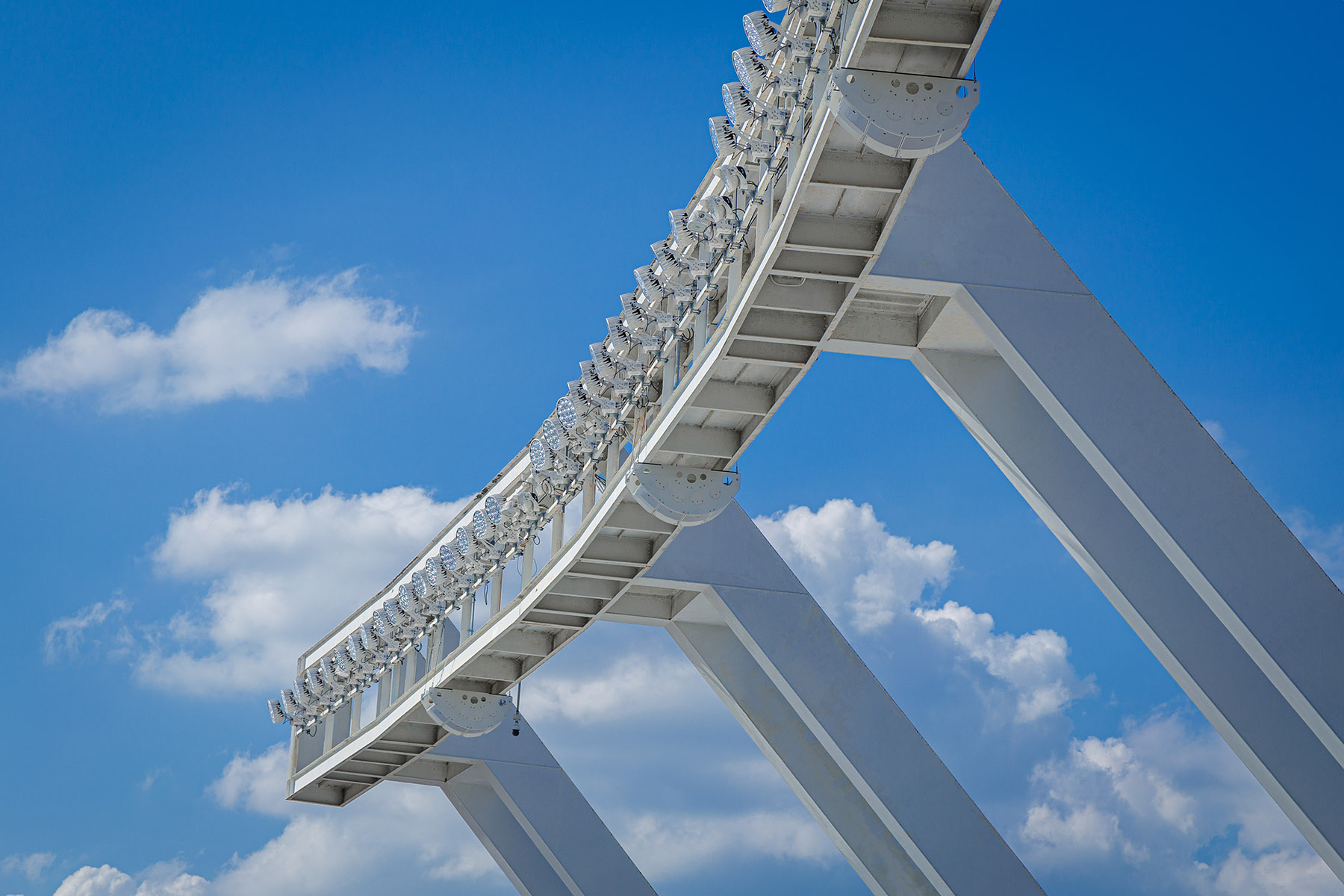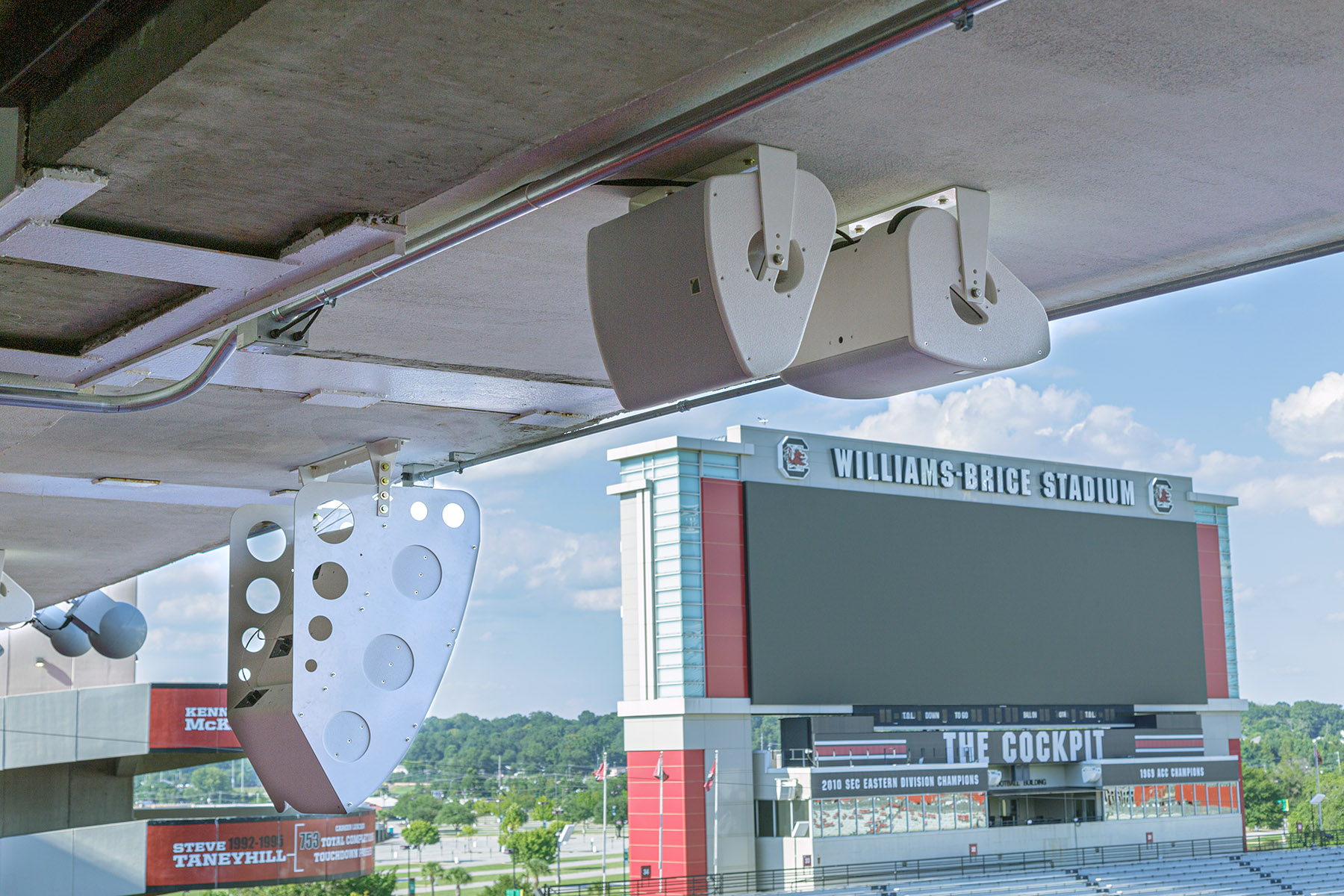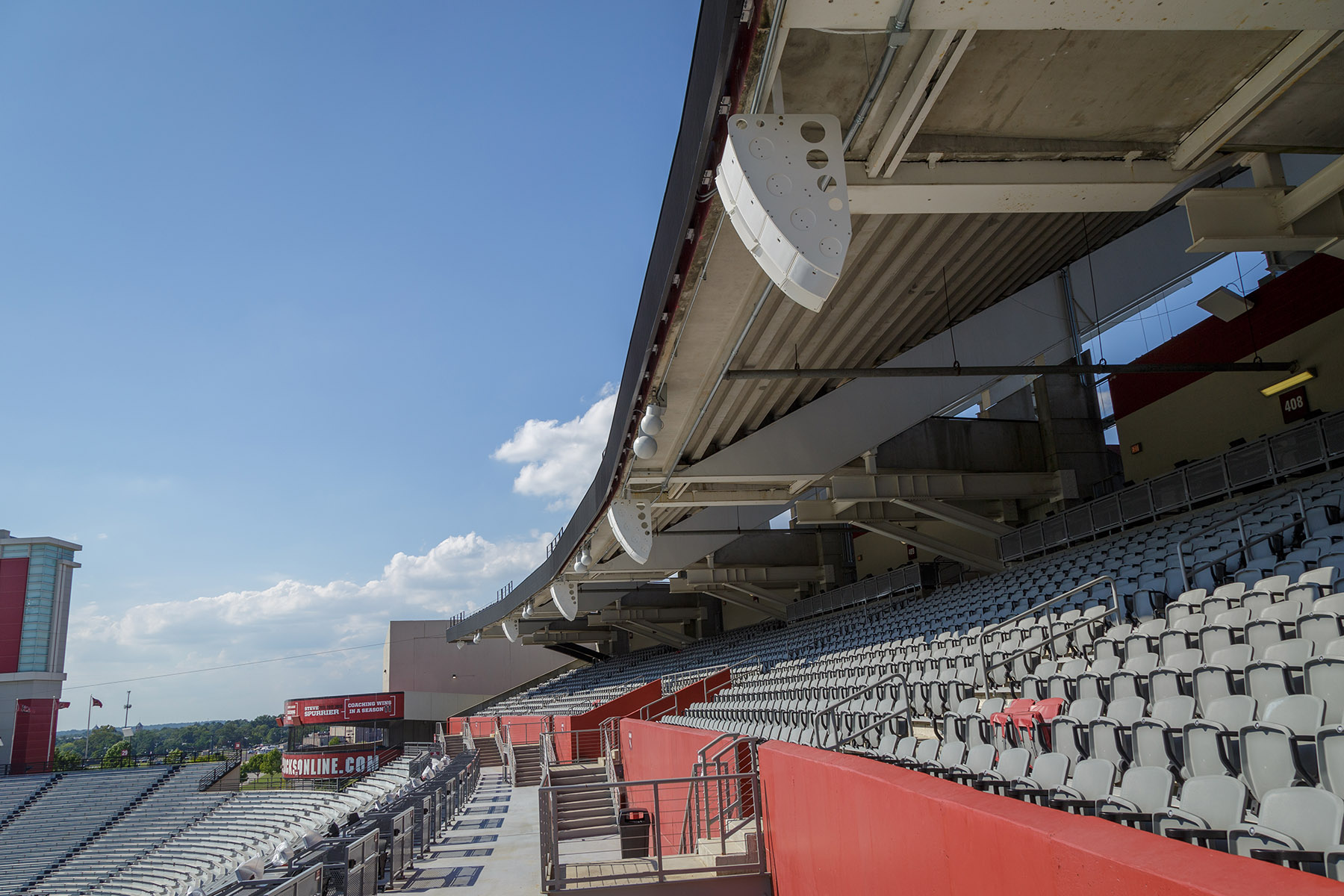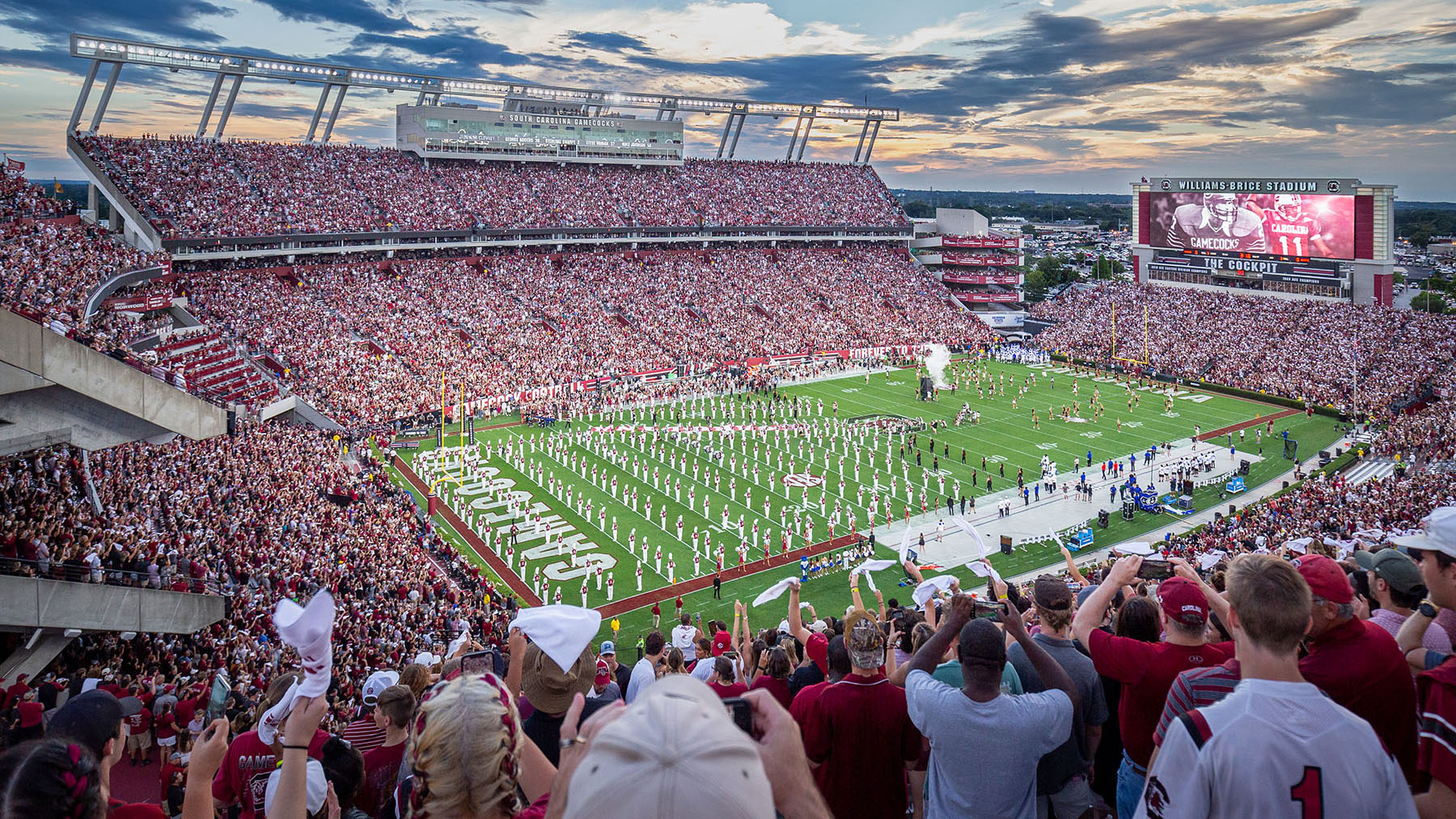Good and loud: those are the adjectives routinely applied to Williams-Brice Stadium at the University of South Carolina in Columbia, SC. On game days, the atmosphere at the venue, which is home to the university’s South Carolina Gamecocks, has developed a reputation for being one of the most rowdy and energetic environments in NCAA football. That enthusiasm translates into trouble for opposing quarterbacks trying to call plays in what is also widely noted by visiting teams as among the loudest college-stadium environments to play in.
So, when Williams-Brice Stadium needed to renovate its sound system before this year’s college football season, it turned to the brand that combines high volume and high quality: L-Acoustics. An A15i system was installed over the summer by St. Louis-based Cignal Systems, a Logic Systems company, from a system design by consultant Idibri, a Salas O’Brien company.
[JUST RELEASED: SCN Top 50 Systems Integrators 2022]

Williams-Brice Stadium, originally built in 1934, is a venue eternally in progress. Regular renovations and expansions over the years—$30 million worth in just the last decade—took it from a capacity of 17,600 when it opened to just shy of 80,000 today. Not surprisingly, the school wanted the stadium’s sound to keep up, which led to the recent A15i system installation. The venue’s evolving layout and geometry, with a large balcony, unusual for a college football stadium, made it a candidate for a distributed-type sound system design versus the typical point-source system located at one end of the stadium.
In fact, it is the first American football stadium to have the A15i speaker installed in a distributed design configuration. As a result, says Chip Self, owner and CEO of Cignal Systems, the PA has hundreds of speakers throughout the bowl seating.
[College Football Saturdays: Video Boards, Audio, and Pro AV Tech That Bring the Hype]
“There are 14 different and distinct types of arrays throughout the stadium now, ranging from a single box to six or seven boxes each,” he says of the system, which comprises an astounding 318 loudspeakers, including 67 A15i Focus and 139 A15i Wide, with 75 X12 and 37 X8 coaxials, all powered by a combination of 53 LA4X and 29 LA2Xi amplified controllers. “It’s a complex system,” designed by Idibri’s Casey Sherred and Ben Cating, “but it sounds incredible, and it covers every seat in the venue evenly and consistently.”

Sherred, senior consultant, acoustics and technology at Idibri, agreed that exceptional coverage was a key goal for this game. In fact, it was the university, in search of better and more nuanced coverage than the old end-zone system they wanted to replace, that requested a distributed system approach. “A distributed system would give them the coverage they wanted but also let us tailor the system for different parts of the venue to enhance the fan experience, such as making it louder in the student sections and less so in the suites,” Sherred explained. “We were able to meet those requirements and more with A Series.”
He noted that the A15i offered a low-frequency extension to 40hz, eliminating the need for subwoofers in the design. “Additional low frequency optimization is achieved by applying full range AutoFilter,” he added. “This is enabled by the seamless integration of the Soundvision model with Network Manager. Filter settings are automatically imported into the amplified controllers, which was a huge labor and time saver. The full ecosystem approach made the design and deployment easier and faster.”

However, mounting the loudspeakers was the biggest challenge in this project. Many of the main array speakers necessary to cover the lower bowl needed to be attached to the underside of the balcony protrusion, which is made of poured concrete. That type of construction inevitably includes inconsistencies in the material’s texture due to anomalies such as air pockets in the concrete. The location of these speakers was compelled by sightline concerns, yet their placement also had to address aiming and coverage issues for the sound.
[SUBSCRIBE to AV Network Newsletters and Publications]
This required a completely new approach to installing the speakers. Cignal Systems’ integrators first linked the machined-aluminum plates connecting the speakers, then attached the main mounts using carefully placed and spaced anchors into the concrete, making sure the distance between anchors was sufficient to avoid stressing the concrete in any one spot. According to Self, the A15i was the only speaker that could have worked in this highly precise, completely custom-installation design.
“A combination of the A15i’s power and light weight, plus the variety of available patterns and waveguides for each box type, provided the flexibility that this project demanded,” said Self. “It let us hang the boxes as much as a foot, and a half higher than normal, which made sure we were able to meet the requirement not to interfere with sight lines, and the installation version of the A15 meant we didn’t need to buy a lot of expensive additional rigging. We couldn’t have done this project nearly this well without the A15i.”
